| We were camped 15km to the north east but we caught a
bus which dropped us right in the centre by this statue which we think is of
Miguel Hidalgo. Querétaro was founded in 1531 by Conin who was an Otomi
chief who later became governor of the state. Today it is a bustling city of
600,000 people with its historic centre listed as a World Heritage site, but
in the past it has been the birthplace of revolution. | 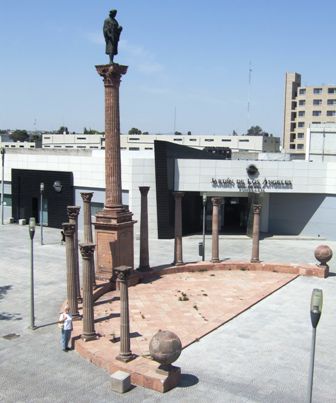 |
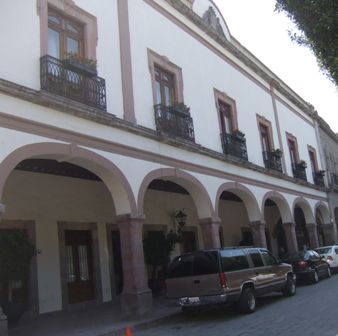 |
We crossed the Alameda Hidalgo which is the central garden square and
immediately we were in the Centro Historico. We headed for the tourist
office for maps and guides (in English!). This is typical of the
architecture with the arches over the pavements very much as it is in parts
of France. |
| Another statue gazing down. The Mexicans seem to have
hundreds of them remembering old priests from the early Spanish days and
more recent revolutionaries and government figures. The sign says this is
Juan Caballero. | 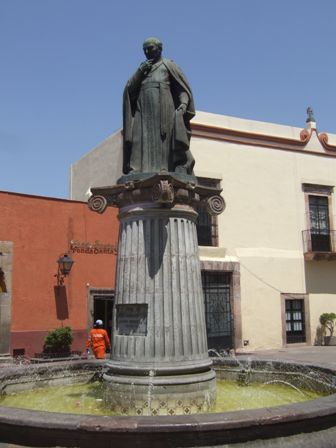 |
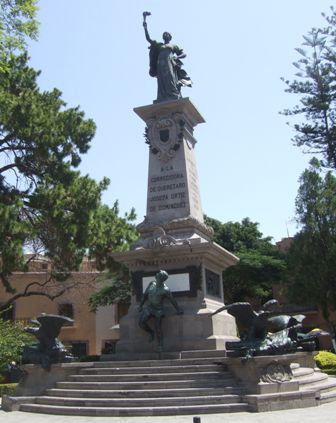 |
There are even women commemorated. This is Doña
Josefa Ortiz (La Corregidora). When the revolutionary conspiracy was
discovered, she was locked up but managed to whisper a warning to the
conspirators through a keyhole. The keyhole is portrayed in the statue in
the centre of the shield at the top of the plinth. As a result of her
warning the revolution intended to win independence from Spain was announced
early by Father Miguel Hidalgo on 16th September 1810. |
| But the city's history goes back much further as
portrayed by this Chichimeca Indian dancer, a reminder of the indigenous
cultural heritage which abounds in Mexico even today. | 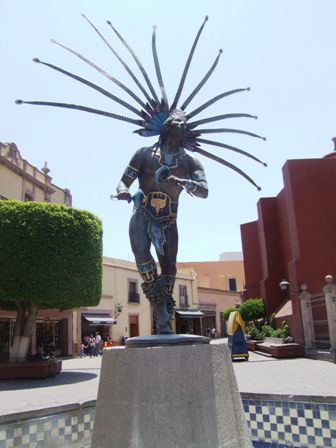 |
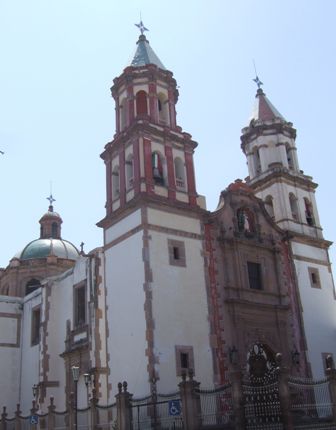 |
There are so many churches we could not always remember which was which.
Some are listed in the guides but others are not. They are generally very
impressive, yet most had just a few folk inside whenever we visited.. |
| This is the ex-convent and temple of San Francisco. It
was the first convent of the city and was founded in the mid 1500s.
Additions were made in the 17th century and four chapels were destroyed in
the 19th century. Today it is the regional museum of Querétaro. | 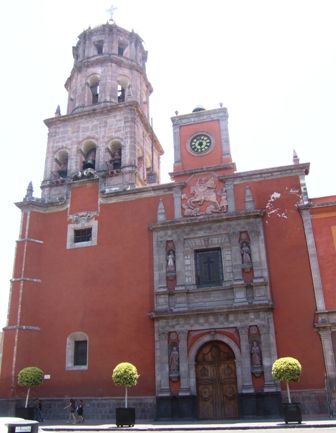 |
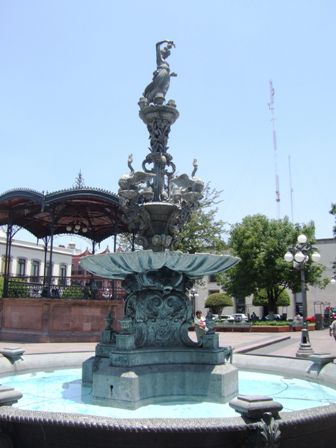 |
This fountain with its statue of the goddess Hebe was created in 1880. For a
long time the plaza it is in was called the Garden of Obregon. Today it is
the Garden of Zenea in honour of the man who was Governor of Querétaro in
1874. |
| This is the Teatro de la República.
It stands on the corner of Angela Peralta Street. She was a famous opera
singer and her name is associated with many theatres in Mexico. This theatre
has a long history: in 1867 a tribunal met here to decide the fate of
Emperor Maximilian (he was shot!) and in 1917 Mexico's constitution was
signed here. | 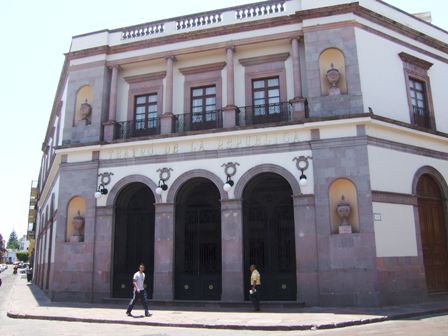 |
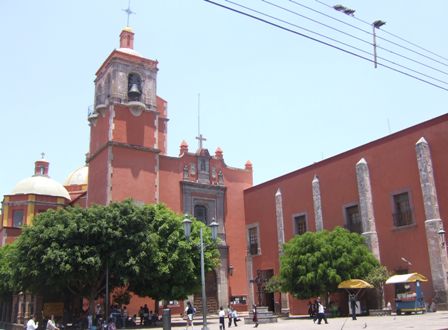 |
The barefooted Carmelites from the province of San Alberto arrived
here in 1602 and founded the Temple and Convent of Del Carmen in 1614.
Extensions were added in 1685. |
| The Temple and Convent of San Antonio was built in
1613 as a monastery for the Franciscans. The church was completed in 1678
and was much adorned around 1700 in the baroque style with a magnificent
altarpiece. | 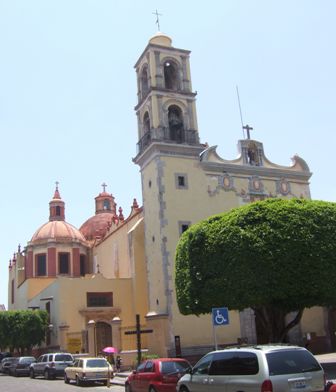 |
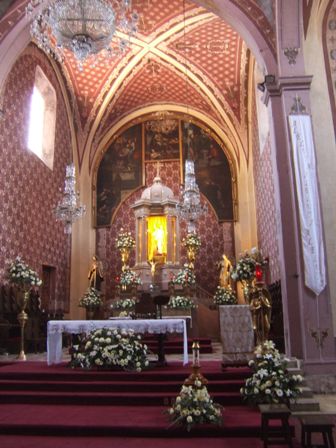 |
Many of these churches look impressive from the outside but the insides are
equally spectacular. In this respect Mexico's historical architecture is far
more impressive than that of the US. |
| The organ will be no where near as old as the church
but it shows that money has continued to be spent to maintain and update
this architectural wonder. This organ is unusual in that the smaller pipes
are set horizontally, extending over the upper railing. | 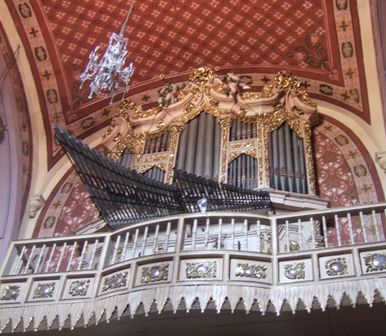 |
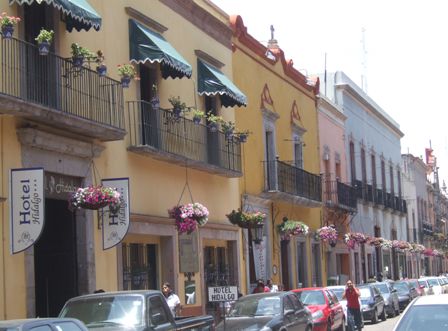 |
Not so impressive but we did admire all the hanging baskets. The owners of
houses in this area seem to take a real pride in the heritage of their city. |
| We stopped to look inside the Hotel La Casa de la
Marquesa. This is a serious old style 5 star establishment with all the old
trimmings. This archway at the entrance is spectacular. | 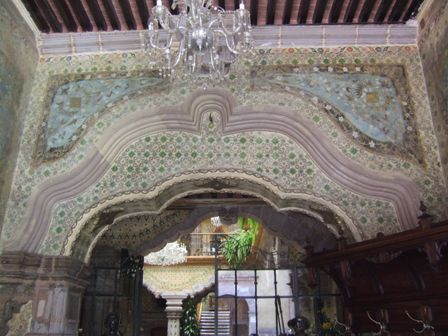 |
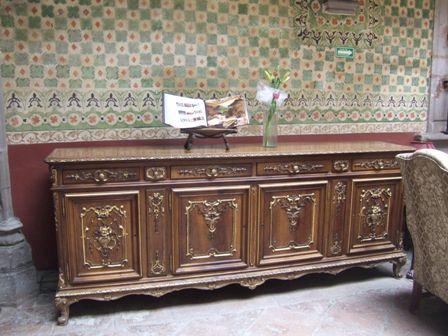 |
Inside is this antique sideboard which was probably brought over by the
Spaniards. |
| And the doors are most ornate and similar to those
which enhance many of the old churches. Note that you only get to see less
than 1 in 10 of the photos we have in our collection. | 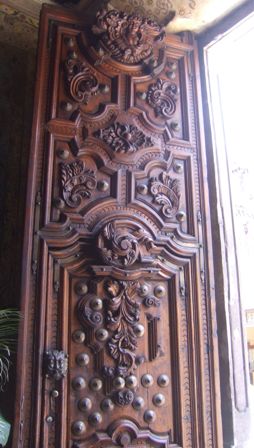 |
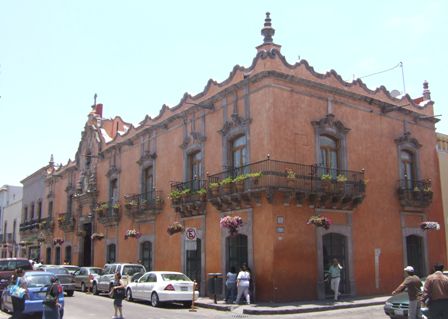 |
This is the hotel from the outside. It looks old and venerable! |
| One of the most breath-taking churches we visited was
the Church of the Monastery of Santa Clara de Jesús,
built in 1633 in a late renaissance style. Inside is some of the most ornate
baroque decoration we have seen which was added between 1770 and 1780. This
is just part of one side wall, the opposite wall and the back of the church
are similarly gilded. | 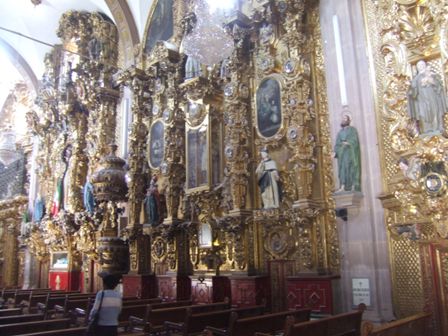 |
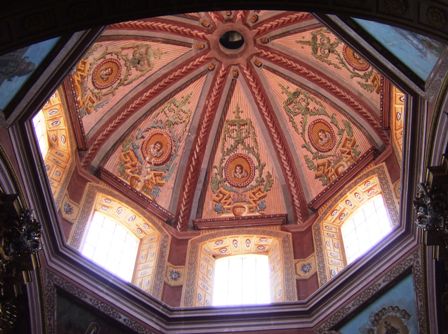 |
Almost all the churches have domes and this is no exception but the
decoration is rather special. |
| I think I found the walls a little overpowering but it
is certainly one of the most unique churches we have visited. | 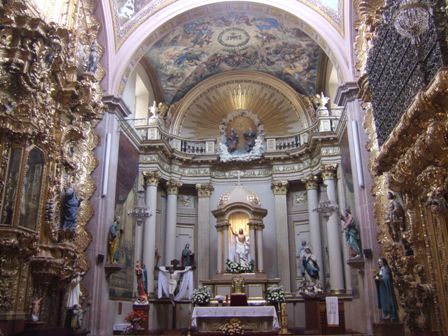 |
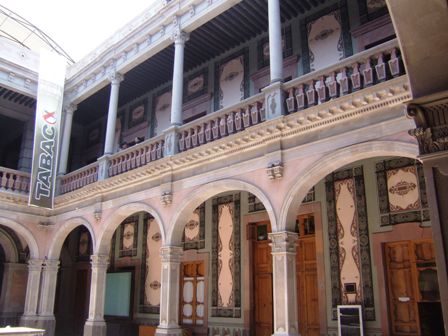 |
This used to be the Episcopal Palace but is now government offices housing
the legislature. The outside is relatively plain. the beauty is on the
inside. |
| The Mexicans really love friezes and seem to paint
them on any available wall. Many are of recent origin as I suspect this one
is. But the subjects could be those of several hundred years ago. This is in
a stairway and is two stories high. | 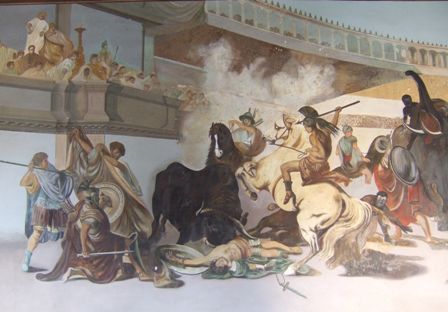 |
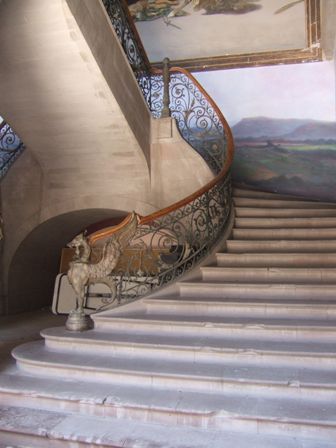 |
The staircase is equally grand and impressive. This is half of the lower
portion - there is a matching part on the other side. Note the ornamentation
of the banisters. |
|